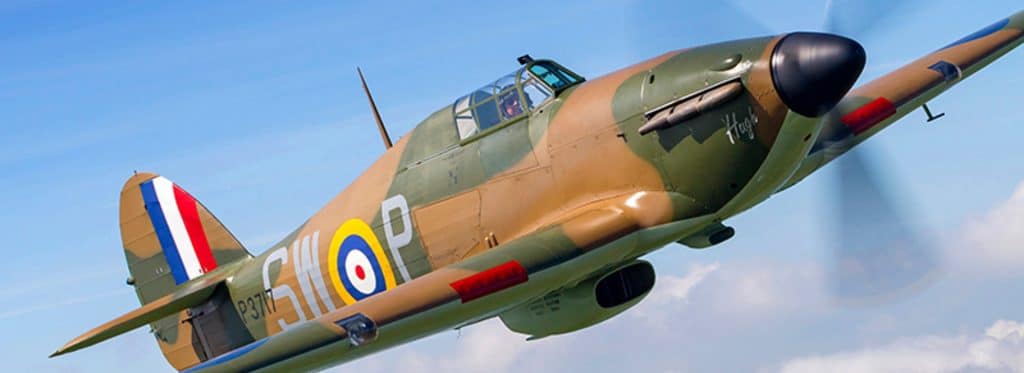Made famous during the Battle of Britain as the work horse of that struggle, the Hawker Hurricane is a single-seat fighter aircraft designed and predominantly built by Hawker Aircraft Ltd in the late 1930s for service with the Royal Air Force (RAF). Probably unfairly overshadowed in the public consciousness by the Supermarine Spitfire’s role during the battle in 1940, the Hurricane nontheless inflicted 60 per cent of the losses sustained by the Luftwaffe in the engagement, and went on to fight in all the major theatres of the Second World War.
The Hurricane originated from discussions between RAF officials and aircraft designer Sir Sydney Camm about a proposed monoplane derivative of the Hawker Fury biplane in the early 1930s and despite an outdated (by then) but institutional preference for biplanes and lack of interest from the Air Ministry, Hawker refined their monoplane proposal, incorporating several innovations which became critical to wartime fighter aircraft, including retractable landing gear and the more powerful Rolls-Royce Merlin engine. The Air Ministry ordered Hawker’s “Interceptor Monoplane” in late 1934, and the prototype Hurricane K5083 performed its maiden flight on 6 November 1935.
In June 1936, the Hurricane went into production for the Air Ministry and entered squadron service on 25 December 1937. At that point in time, it provided the RAF with a fighter 160kph (100mph) faster than any other british aircraft then in service and with an increased fire power of eight machine guns.
As the storm clouds of war loomed ever larger, it was rapidly procured prior to the outbreak of the Second World War and when war was declared, on the 3 September 1939, about 500 Hurricanes were in service across 18 Squadrons several of which were initially sent to the defence of France. During the 1940 German Blitzkrieg through the Low Countries and France, they fought a punishing rearguard action in which over 25% of all Fighter Command’s aircraft were destroyed.
The Hurricane will always be remembered for the vital role it played, with its partner the Spitfire, in hectic battles during the summer of 1940. As the Battle of Britain raged in the skies overhead aircraft production increased so that by September 1940 the number of Hurricane squadrons had risen from eighteen, a year earlier, to thirty-two.
It was in a Hurricane of No.249 Squadron that Flt Lt J.B. Nicholson was awarded Fighter Command’s only Victoria Cross. Later in the War Hurricanes made a significant contribution to the defence of Malta, the desert war in North Africa and war against the Japanese in the Far East.
The Hurricane was developed through several versions, into bomber-interceptors, fighter-bombers, and ground support aircraft as well as fighters. Certain versions were also designed for the Royal Navy known as the Sea Hurricane which had modifications enabling operation from ships and some of these were also converted as catapult-launched convoy escorts. By the end of production in July 1944, there had been over 14,000 Hurricanes built in Britain, Canada, Belgium and Yugoslavia.
Today there are only 12 airworthy Hurricanes left in the world, 2 of which are operated in the UK by the RAF’s Battle of Britian Memorial Flight…in fact if you want to hear the amazing sound of the Merlin engine and hear stories of derring-do, you can get that by clicking here: https://www.rafmuseum.org.uk/research/collections/hawker-hurricane-1/
